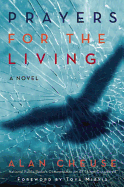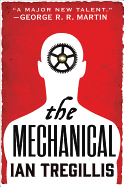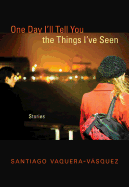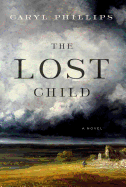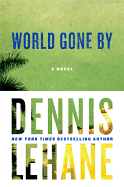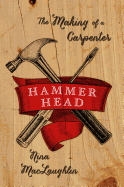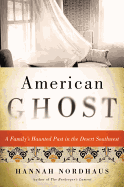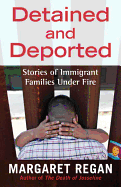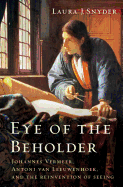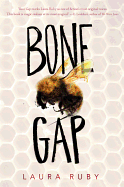 On May 2, some 400 independent bookstores nationwide will participate in the inaugural Independent Bookstore Day. Along with parties, author appearances and events, these stores will offer exclusive merchandise for the occasion, such as a literary tea towel set with quotes from Nora Ephron and Sherman Alexie; a signed print by Chris Ware; a boxed set (literally--a reusable tin) containing Shadow of the Wind, The Borrower, The Bookman's Tale and 84, Charing Cross Road; a Stephen King broadside from his new Finders Keepers; even a bunsie--a onesie with the "Guess How Much I Love to Read" bunny on the front.
On May 2, some 400 independent bookstores nationwide will participate in the inaugural Independent Bookstore Day. Along with parties, author appearances and events, these stores will offer exclusive merchandise for the occasion, such as a literary tea towel set with quotes from Nora Ephron and Sherman Alexie; a signed print by Chris Ware; a boxed set (literally--a reusable tin) containing Shadow of the Wind, The Borrower, The Bookman's Tale and 84, Charing Cross Road; a Stephen King broadside from his new Finders Keepers; even a bunsie--a onesie with the "Guess How Much I Love to Read" bunny on the front.
Here's a sampling of the creative things stores have planned:
In New York City, more than 20 indies have banded together and will collectively publicize each other's events and activities, and are working on at least one joint event. Astoria Bookshop in Queens will have afternoon events for children and evening events for adults, including a book-based trivia game and cocktails. Greenlight Bookstore in Brooklyn will offer morning portrait drawings for kids, an afternoon literary photo booth with authors, and an evening party. In Hoboken, N.J., Little City Books will hold its grand opening celebration and ribbon-cutting ceremony.
In Decatur, Ga., Little Shop of Stories will throw a 10th anniversary "It Takes a Village to Raise a Bookstore" party. At the King's English Bookshop in Salt Lake City, Utah, there will be visiting authors, games, a Seuss-a-thon for children and a local food truck. San Francisco will have a day's worth of author events at Green Apple Books, epicenter of last year's California Bookstore Day, which was the impetus for Independent Bookstore Day. (This year the event will again be called California Bookstore Day in the Golden State.) At the Booksmith, there will be a Mad Hatter Tea Party, and the San Francisco Bike Coalition has organized a bike tour of the city's indies.
There's plenty more planned across the country--more information, and a complete list of all participating indies, is available here, and you can follow Independent Bookseller Day on Twitter and Facebook. --Alex Mutter
Prayers for the Living
by Alan Cheuse
Fig Tree Books, whose mission is to "chronicle and enlighten the unique American Jewish Experience," has issued a revised version of NPR critic Alan Cheuse's 1986 novel The Grandmothers' Club as Prayers for the Living.
Minnie Bloch, who provides the novel's voice, isn't the typical narrator, and her son, Manny Bloch, isn't the typical Reform rabbi. Immigrants to the Lower East Side in the 1930s, their lives are upended by a tragedy that propels Manny into the rabbinate and simultaneously connects him with the woman who will become his wife. Through her family he becomes involved in a business career that for a time he pursues alongside his religious duties, but that ultimately seduces this man who had a "calling for one kind of life and a yen for another kind of life" to become someone "slipping out of one life like a snake from its skin and taking on another."
Cheuse's novel is based on the story of Eli Black, a rabbi turned businessman who became enmeshed in scandal in the 1970s. But Cheuse (A Trance After Breakfast and Other Passages) is less interested in the precise details of that story, or the intricacies of Manny's business machinations, than he is in considering how idealism and integrity can give way under the pressure of pursuing outsized financial rewards.
While all of its principal characters are contemporary American Jews, Prayers for the Living possesses the feel of a Greek tragedy. Readers share Minnie's apprehension as the story marches toward its seemingly preordained conclusion, hoping for a different ending while knowing one is impossible. --Harvey Freedenberg, attorney and freelance reviewer
Discover: The powerful saga of a rabbi turned businessman's rise and spectacular fall.
The Mechanical
by Ian Tregillis
In The Mechanical, Ian Tregillis (Something More Than Night) explores a dazzling array of genre themes: alternate history in which the Dutch are the major global power and the French Catholic monarchy is its enemy in exile; mechanical beings (Clakkers) enslaved by their masters to serve under painful compulsion (or geasa); and Victorian fashion and scientific sensibilities grafted onto an alternate 1926 setting in the New World.
Jax is a Clakker owned by a rising Dutch merchant family. His internal monologue brings readers into the mind of a mechanical, though the Dutch--the only keepers of the magical alchemy that brings these metal beings to life--insist they have no will or soul of their own. Jax proves this claim false when a small, mysterious glass bead frees him from his geasa.
Father Visser, a secret Papist, is the one who contrived to get Jax to take the bead to the New World and Visser's allies there. The priest is captured, tortured and given the same geasa the mechanicals endure, turning him into a murderous instrument of the Dutch crown.
French spymaster Berenice Charlotte de Mornay-Périgord, also known as Talleyrand, is determined to discover the secrets of Clakker alchemy. She brings a deadly Dutch military mechanical into the French castle, which ends up killing her husband. Exiled, she cannot set aside her need for revenge on the Dutch.
The characters are realistically flawed, the stakes are high and the settings highly detailed and believable. The Mechanical is an engaging start to a thrilling series. --Rob LeFebvre, freelance writer and editor
Discover: A well-thought-out alternate history with vivid characters in every exciting scene.
One Day I'll Tell You the Things I've Seen: Stories
by Santiago Vaquera-Vásquez
Santiago Vaquera-Vásquez's fine collection of stories begins and ends at la línea, the long border that separates the United States and Mexico. In the first story, "Over There on the Other Side," the narrator, waiting at the Mexicali checkpoint, reflects on how easy it had been for his parents to cross over illegally and start a new life, and how, once on el otro lado, immigrants gradually lost connection to their pasts: "Some stayed, others came back, and a few went missing." One Day I'll Tell You the Things I've Seen contains stories of the Mexican diaspora and its members' tenuous ties to family in Mexico, family in the U.S., family throughout the world. In the words of one character describing himself to a Peruvian girlfriend at a Madrid café: "Made in México, born in the USA, chica.... I'm just passing through."
Vaquera-Vásquez (Luego el Silencio), assistant professor at the University of New Mexico, has published several nonfiction articles about his own cross-border experiences. The stories in this collection focus on Latinos wandering through places like Iowa, Mexico City, Madrid, Istanbul and even college town Ithaca, N.Y. His lonely male narrators drift from woman to woman ("partners had no names: they were merely Things, Cosas. Sometimes, most times, they were Caos"), like Mexico City's elusive title character in the story "Carmen Whose Last Name I Don't Remember." Easily mixing English and Spanish words without any italic designation of "foreign" words, Vaquera-Vásquez creates a world where we are all citizens, but none can completely escape his origins. As he says of one character named Rodríguez: "No way to hide that nopal nailed to his forehead." --Bruce Jacobs, founding partner, Watermark Books & Cafe, Wichita, Kan
Discover: Nuanced stories of members of the Mexican diaspora searching for connections in both the present and the past.
The Lost Child
by Caryl Phillips
In The Lost Child, internationally acclaimed novelist and essayist Caryl Phillips (Color Me English) uses Emily Brontë's Wuthering Heights as a reference point for his multi-generational story of a family, from their roots in West Indian slavery to the fractured promise of their lives in contemporary England. It's a powerful and bittersweet work of the imagination that touches on Phillips's familiar themes of belonging and exile.
Like Cathy Earnshaw, Monica Johnson has a difficult relationship with her parents. Growing up in the late 1950s, she rebels against the pretensions of her bourgeois father. At Oxford, she meets and marries a fellow student; when the marriage fails, he returns to his native West Indies without her. Estranged from her family, lonely and impoverished and increasingly self-destructive, Monica raises their two sons in council housing while slipping slowly into mental illness.
Interspersed with Monica's story are those of Tommy and Ben, her two neglected boys whose dark skin recalls Heathcliff's and further marks them as different. And in a long interlude in the middle of the novel, a feverish Emily Brontë slips between a dreamlike past--unable to prevent her brother Branwell's decline and ruin--and her increasingly hallucinatory present in Charlotte's sisterly care.
The Lost Child brilliantly intersects the lives of the Johnsons with the fictionalized Brontë family, using Wuthering Heights as the catalyst for a highly original story with devastating resonance. --Jeanette Zwart, freelance writer and reviewer
Discover: A powerful and devastating novel by Caryl Phillips that uses references to Wuthering Heights and the lives of the Brontës to tell the story of a contemporary English family.
Mystery & Thriller
World Gone By
by Dennis Lehane
Dennis Lehane's World Gone By delivers the pulse-pounding thrills of his earlier novels while exploring deeper themes of loyalty, family and how the corrupting influences of the past haunt the present.
It's been 10 years since Joe Coughlin lost his wife and his crime empire, as depicted in Live by Night. Joe has made huge strides in legitimate business and is a mover and shaker in World War II-era Tampa, Fla. He still moonlights as consigliere to the Bartolo crime family, but he thinks he's left his past behind and is skeptical when he hears of a plot to kill him on Ash Wednesday. However, as certain facts come to light, Joe's attempts to root out the truth behind the hit before it's too late add gripping immediacy to World Gone By. Though he wants to lead a life of virtue, Joe is damned good at ferreting out criminal motivation and knows how to kill with the best of them. He's also ferociously devoted to his son, Tomas, wanting to protect him from both physical harm and the soul-deadening fact of his own sordid past.
Lehane is an expert in criminal mayhem, but he also has mastered the nuances of interior struggle, which allows his writing to transcend the noir genre boundaries. Lehane is never blind to the corrosive effects the struggle for power and prestige can have on one's life, and how it can turn a good man bad and exile him from all that he loves. --Donald Powell, freelance writer
Discover: Another great noir novel from a master, with deeper themes of sin, loyalty and maintaining power at the cost of family.
Biography & Memoir
Hammer Head: The Making of a Carpenter
by Nina MacLaughlin
Nina MacLaughlin studied English and Classics in college, and went on to work for a Boston newspaper. She spent her 20s there, increasingly frustrated by pointing and clicking and sinking into her desk chair, so she walked away, unsure of what was next, until she spotted an ad for a carpenter's assistant: "Women strongly encouraged to apply." MacLaughlin relates the journey offered by that opportunity in Hammer Head: The Making of a Carpenter.
MacLaughlin's new boss, Mary, describes herself as a "journeyman-level carpenter and a slightly better tiler." MacLaughlin doesn't know what these words mean, but brings her strength, work ethic and quickness to learn, and finds an unexpectedly rewarding new life working with her hands: "The feeling that resulted from the effort, the satisfaction, was so different from the one I knew putting a final period on a book review or a profile on deadline." She documents years spent learning and working in a male-dominated field, occasionally seasoned with observations referencing poets and ancients, but mostly living and reveling in the tangible: calluses, sinews, wood and sweat. That interplay of the physical and the intellectual centers this book, which is itself both intelligent and well-muscled, hardy and poetical.
Organized by tools that represent qualities of character, Hammer Head is unsurprisingly beautifully written, and well supported in both its structural and its cerebral elements. MacLaughlin's voice is wise and playful, wondering and astute, and Mary is a marvelous character, levelheaded and non-demonstrative. The result is a charming, thought-provoking, utterly lovely ode to work and life and learning. --Julia Jenkins, librarian and blogger at pagesofjulia
Discover: The journey of a journalist-turned-carpenter, a woman in a man's world, both thoughtful and spirited.
American Ghost: A Family's Haunted Past in the Desert Southwest
by Hannah Nordhaus
For decades, stories have circulated that the historic La Posada Hotel in Santa Fe, N.Mex., is haunted. Part of the hotel was once a private home, and the ghost is supposed to be its former resident, Julia Schuster Staab, great-great-grandmother of journalist Hannah Nordhaus (The Beekeeper's Lament). In American Ghost, Nordhaus juxtaposes an investigation into her own family history with her adventures in modern-day ghost hunting, both of which she undertakes in an effort to understand this mysterious ancestor.
Nordhaus's German Jewish great-great-grandparents were prominent among the early white settlers of Santa Fe. Thanks to that prominence, their public lives were reasonably well documented, but personal records are sparser and she was unable to find any left by Julia Staab herself. A diary kept by Julia's daughter, Bertha, fills in some of the blanks, but is frustratingly vague about what Nordhaus is interested in. Much of what she encounters suggests that Julia was deeply unhappy in Santa Fe; if this was true, why would she linger after death in a place where she was so miserable in life? Nordhaus's research on hauntings leads her to consult an assortment of psychics, mediums and operators of ghost-hunting enterprises. Some of them know about the ghost of La Posada, and what Nordhaus learns from them helps her sort legend from fact.
The supernatural elements are entertaining, and Nordhaus's chronicle of her unlikely pioneer ancestors is fascinating and frequently surprising. Ultimately, American Ghost is a reflection on how the unresolved questions in our own histories can be even more haunting than ghosts. --Florinda Pendley Vasquez, blogger at The 3 R's Blog: Reading. 'Riting, and Randomness
Discover: The history of a pioneer family whose matriarch's ghost may still haunt her former home.
History
Kill Chain: The Rise of the High-Tech Assassins
by Andrew Cockburn
Journalist Andrew Cockburn (Rumsfeld) explores the U.S. military's dubious obsession with automated warfare in Kill Chain: The Rise of the High-Tech Assassins. It began during the Vietnam War, when a then state-of-the-art intelligence gathering system was deployed along the Ho Chi Minh Trail in Laos to stop the North Vietnamese from infiltrating South Vietnam. Operation Igloo White dropped billions of dollars of seismic, acoustic and chemical sensors onto the trail, triggering airstrikes whenever the North Vietnamese Army was detected. Unfortunately for the United States, the NVA quickly learned how to trick the sensors, sending bombs mostly into empty jungle or onto indigenous people.
True drone warfare required Information Age technological advances unavailable before the wars in Afghanistan and Iraq. Until those advances were possible, the United States military used conventional weapons systems in their strategic assassinations. South American cocaine kingpins became prime targets, and their deaths were touted as drug war victories. However, Cockburn shows that killing kingpins only made cocaine more available in the U.S. by creating competition among new upstarts. This pattern has repeated itself in Afghanistan, where the assassination of Taliban elders created a younger, more reckless, far deadlier generation of jihadi leaders.
Underpinning these strategic blunders is an infuriating history of corruption and collusion among politicians and private arms manufacturers, often at the expense of taxpayers, soldiers burdened with subpar weapons and civilians identified as militants by cameras with resolutions equivalent to legal blindness. Kill Chain is an engagingly written revelation of the well-hidden horrors and political farce behind the U.S. drone program. --Tobias Mutter, freelance reviewer
Discover: The history, horror and politics behind the U.S. military's drone program.
Current Events & Issues
Detained and Deported: Stories of Immigrant Families Under Fire
by Margaret Regan
Twenty million immigrants arrived in the United States between 1990 and 2010, in an ongoing wave of immigration comparable to the peak years of Ellis Island. In response, there has been a historically similar rise in anti-immigrant sentiment and border control legislation. In Detained and Deported: Stories of Immigrant Families Under Fire, Arizona journalist Margaret Regan (The Death of Josseline) reports on the enormous and growing border and immigration enforcement system, through the personal experiences of immigrants from Central and South America and of their family members, employers, friends and advocates.
Regan states that at the beginning of the 21st century, immigrants are more likely to have lived and worked in the U.S. for many years and, if the parents are deported, to have young children placed in foster care or adopted. With their roots and close family in the U.S. rather than in their legal country of origin, deportees are willing to take extreme risks to return. Regan is a persistent and sensitive interviewer, and her long experience reporting on these issues deeply informs her narrative as she investigates detention centers, courts, shelters and late-night bus stations, interviewing a variety of immigrants, pro bono lawyers, community volunteers and Mexican repatriation workers. She makes a strong argument that, as of 2015, the immigrant detention system is not only inhumane but also corrupt and ineffective: a gold mine for private contractors, a waste of millions in taxpayer dollars and destructive to families in ways that seem likely to breed future social and economic costs. --Sara Catterall
Discover: An intimate examination of the human and economic costs of the corrupt and inhumane U.S. immigration enforcement system.
Science
Eye of the Beholder: Johannes Vermeer, Antoni van Leeuwenhoek and the Reinvention Of Seeing
by Laura J. Snyder
In Eye of the Beholder, Laura J. Snyder (The Philosophical Breakfast Club) uses the parallel lives of painter Johannes Vermeer and clothier-turned-scientist Antoni van Leeuwenhoek to illustrate the critical role played by optical lenses in the scientific revolution of the 17th century, with its new emphasis on empirical observation.
Direct observation as a means of understanding nature brought with it a need for new scientific instruments. The most notable of these were the telescope and microscope, which not only allowed scientists to view things that were previously unseen but also forced them to reconsider how we see. Painters responded to new theories about how sight works with their own investigations into light, shadow and perspective, using mirrors, lenses and variations of the camera obscura.
Vermeer and van Leeuwenhoek were active players in the international artistic and scientific communities that explored the nature of sight on the canvas and in the world. Snyder sets the details of their careers within the broader contexts of art and science in Europe at the time. She tells the histories of lenses and the use of perspective in painting. She draws links between Vermeer and van Leeuwenhoek, and describes their positions within the society of the Dutch Golden Age. And, like Vermeer and van Leeuwenhoek, she explores the tricky relationship between what we believe and what we see.
Drawing on the disciplines of art history and the history of science, Eye of the Beholder will appeal to readers of both. --Pamela Toler, blogging at History in the Margins
Discover: How art and science combined to change the way we see.
Children's & Young Adult
It's Only Stanley
by Jon Agee
Rhyming couplets were never more perfectly suited to a read-aloud tale than this one, starring a beagle on a mission and his human family (plus their pet cat).
Jon Agee, who imagined the formative years for jolly St. Nick in Little Santa, here visualizes the double life of Stanley, the Wimbledons' talented dog. In the opening scene, a woman sits up in bed, a cat looks pie-eyed, and the man next to her lies awake. "The Wimbledons were sleeping./ It was very, very late,/ When Wilma heard a spooky sound,/ Which made her sit up straight." A beagle bays at the full moon on the next spread ("Howooo!"), as Walter Wimbledon and the cat stand in the front yard of their very vertical house. "It's only Stanley," Walter reports back to Wilma. "He's howling at the moon." The sing-song rhythm of the couplets adds to the comical escalation of the situation. One by one, their four children join Wilma and Walter in their bed after hearing strange sounds. Each time Walter checks, Agee uses a wordless spread (with choice sound effects) that lets readers in on visual clues to a larger puzzle.
Even though sleep-deprived Walter doesn't take note of the hole in the TV room floor to access numerous electrical cords, children will. They'll also delight in detecting the poor family cat (Max) bearing the brunt of Stanley's project. Stanley's out-of-this-world plans for the household break them out of their dreary routine. Readers will relish going back to the beginning to see how Stanley achieved his goal. --Jennifer M. Brown, children's editor, Shelf Awareness
Discover: An out-of-this-world read-aloud adventure for the Wimbledon family, courtesy of their inventive dog, Stanley.
Bone Gap
by Laura Ruby
Laura Ruby (Lily's Ghosts) creates mysticism amid the cornfields and crop circles of Illinois, making a Stonehenge-like majesty of stalks that seem to keep moral tabs on the citizens of Bone Gap.
People call 17-year-old Finn O'Sullivan "Moonface," "Spaceman" and "Sidetrack." He sees and hears things others don't--like the corn talking to him. His older brother, Sean, is down-to-earth enough for both of them. He's been taking care of Finn ever since their widowed mother ran off to Oregon for an orthodontist she met online. When Roza, a wounded beauty from Poland, suddenly appears in their barn, she brings out the healer in Sean. Then one day she disappears, and all light is drained from Sean. It's as if Finn lost them both that day. Finn knows Roza was kidnapped--he watched it happen--but when he can't describe her captor, everyone in Bone Gap chalks it up to Finn's dreaminess. Everyone, that is, except the beekeeper's daughter, Priscilla ("Petey") Willis, and Finn allows her to get closer to him than anyone has been. When Roza's captor returns, Finn will not let him get away a second time.
Ruby probes the meaning of beauty and perception, steadfastness and fickleness in surprising ways as she builds the tension to a climax. She balances supernatural elements with timeless coming-of-age questions that come with intimacy: What do I say and when do I say it? Does he/she see beyond pure pleasure to who I am? Should I leave before he/she does? Readers will devour this in one sitting. --Jennifer M. Brown, children's editor, Shelf Awareness
Discover: A mystery laced with supernatural elements explores the dark side of beauty and power.


